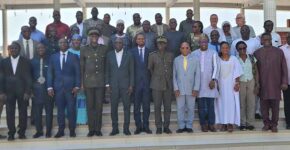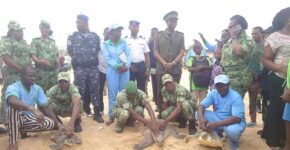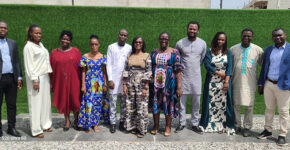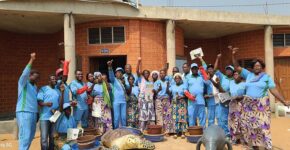[ad_1]
CNN
—
For US troops, the training is nothing new: Applying tourniquets, clearing someone’s airway, recognizing signs of traumatic brain injuries.
But to the Ukrainian troops receiving it, the training is literally a matter of life or death on the battlefield in the war against Russia.
US troops have been providing critical medical instruction and combat casualty care to Ukrainians at Grafenwoehr Training Area in Germany for almost a year, in between other significant training on weapon systems. And while it may not be as high profile as that on tanks, Patriot missile systems, or combined arms tactics, it could arguably have an even more immediate impact on the battlefield.
“Just knowing and keeping in the back of our minds that everything we were doing and saying would have that direct impact on their ability to save lives, and to save each other, and to prolong their lives during their fight for their country – it definitely is going to I think stick with us for the rest of our careers,” Sgt. Alexis Ballard, a combat medic, who helped start the medical training program in Germany, told CNN.
Ballard and Capt. Christina Whitler, the field artillery squadron physician assistant, were among the medics on-site last May as Ukrainians were training on M777 Howitzers. It’s typical for medics to be present at a range during training, and hoping to be as useful as possible, Whitler told CNN she spoke with a Ukrainian leader on the ground to see what else they might need.
The answer was clear: More medical training.

In many cases, the soldiers making up Ukraine’s military are everyday citizens with no military or medical background. 1st Lt. Kristjana McCarthy, a medical operations officer with the New York National Guard who is currently conducting the training in Germany, told CNN that they have people “who worked in hospitals for years before the war working side by side with somebody who was a physical education teacher.”
Indeed, Whitler said when they began the lessons, some Ukrainians had already been trained by US soldiers previously, while others were “brand new” to the military “because of the current situation in Ukraine.”
Combat medical training couldn’t be more crucial; as of November last year, roughly 100,000 Ukrainian troops were believed to have been killed or wounded since Russia’s invasion began in February 2022. There’s no end to the war in sight, as the Russian military continues to bombard Ukrainian positions and shell cities.
Col. Marty O’Donnell, spokesman for US Army Europe and Africa, told CNN that the training “empowers the Armed Forces of Ukraine to better defend themselves against the Russian onslaught and avert potential tragedy by saving lives.” It is overseen by US European Command, US Army Europe and Africa, and the Security Assistance Group-Ukraine, O’Donnell said.
The training is similar in many ways to what US soldiers get. But unlike those US troops, the Ukrainians had come straight from a battlefield and were preparing to go back.
Oftentimes, Whitler said Ukrainian troops brought up real-world examples that they’d experienced in the war raging just miles away. They asked what to do next time if they were to see a similar injury, and in some cases they asked what they could have done to save a fellow soldier, if only they’d known how.
“Those conversations were hard,” Whitler said, “and sometimes we just were able to provide some solace that they did everything they could, and even if there was an OR right next to them, a surgeon couldn’t have saved them.”

The training has grown, though Whitler and Ballard have moved on from conducting it themselves. Two New York National Guard soldiers who are now training Ukrainians – McCarthy and Staff Sgt. Desirie Carson, a combat medic specialist – told CNN it now includes simulations on mannequins, practicing responding to mass casualty events, and addressing burns and fractures.
But it’s those human-to-human moments that will stick with the Americans long after the mission is over.
Ballard said it was clear that many knew they’d soon be “going directly back into it” and “potentially experiencing some of the same things” they were still trying to process.
So sometimes, Americans were there just to listen, and “if nothing else to … reassure them that they’re doing an amazing job and that they couldn’t have done anything better.”
Whitler also recalled moments talking to Ukrainian troops who were exhibiting signs of traumatic brain injuries due to Russian artillery impact – symptoms like dizziness, headaches, or just feeling angrier or more irritable. They were frustrated, but Whitler reassured them that what they were experiencing was, unfortunately, normal.
“I think we did provide a little bit of comfort in that way,” she said, “that they knew ‘I should be experiencing this and hopefully it will go away.’”

And despite the differences in their backgrounds and current situations, the language barriers and the stress of knowing they’d soon be back on the battlefield, the Americans and Ukrainians were still able to find those quintessential “soldier” moments that cross cultural barriers.
That includes trading uniform patches, sharing cigars during a smoke break – Ballard joked that some medical professionals partake in the “universal” military language of tobacco use too – and turning training into competitions, just to have a little bit of fun amid the heavy responsibilities they shared.
Ballard specifically recalled training the troops on how to use a nasopharyngeal airway, which is a thin tube inserted through a patient’s nose to open up their airway.
“We would ask for a volunteer, and, of course, one of the older gentlemen would throw up one of the younger gentlemen to go up,” Ballard said, smiling. Everyone would gather around as closely as they could and watch as they inserted the tube into the soldier’s nose.
“Hearing people’s reactions, it’s the exact same way that all the soldiers I’ve taught have reacted. But watching them do it was absolutely hilarious,” she said, “and was just one of those bonding moments to have with them I think is definitely going to stick with me.”
Those moments made it all the more difficult to see them leave at the end of the training. Whitler and Ballard recalled a graduation ceremony for their Ukrainian partners to acknowledge all they’d learned and done. It was “very emotional,” Ballard said.
“They’re fighting for their lives,” Ballard said. “And they’re fighting for their home. And the absolute least we can do is try to help them.”
[ad_2]
Source link










